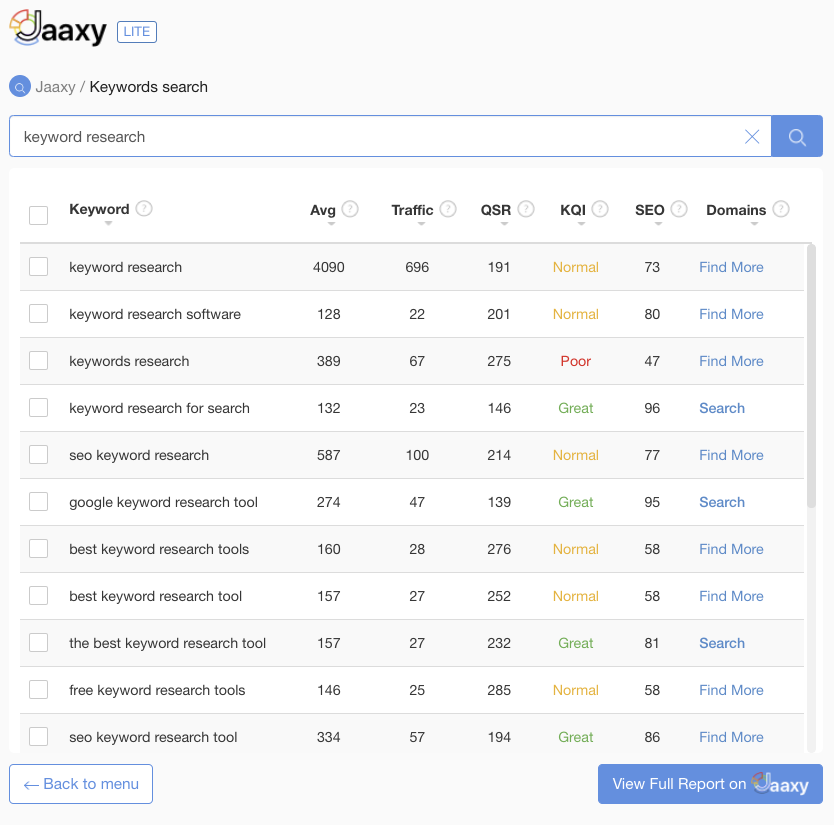I’m no genie but something tells me you have been struggling to get traffic from Google to your website or blog, right?
Chances are this is due to all the “best” keywords being taken and dominated by authoritative websites in your niche.
I understand how frustrating this can be. Sometimes it feels like an uphill battle just to get a few to your website page.
I have some good news, though. You don’t have to continue struggling to gain website attention.
Why? Because I have two (and a half) words that will solve your problem… Long-tail keywords.
In this post, I’m going to give you the only strategy you need to find and rank for long-tail keywords.
If done correctly, this long-tail keyword research strategy (say that 10 times fast) will help you target the best keywords for your website’s content. Not only that, but it will also show you how to rank for content that both satisfies your audience and search engines.
I get it, the process of doing keyword research for SEO can be intimidating–which is why some people prefer to use paid traffic–but, this strategy is so simple it can be applied by a complete beginner.
Stick with me and by the end of this post, you’ll be able to harness the power of long-tail keywords to boost your site’s ranking.
Let’s get started.
What are long-tail keywords?
If your site is brand new or if you want to focus on keywords that aren’t competitive, then you definitely want to target long-tail keywords.
I’m sure you have heard the importance of long-tail keywords in the past. But, for some, this might be a completely foreign term.
So, what are long-tail keywords?
Long-tail keywords are those three and four keyword phrases that are very specific to whatever you are selling. Whenever a customer uses a highly specific search phrase, they tend to be doing so using long-tail keywords.
To give you a practical example, let’s look at the keywords I’m using for this post, “keyword research” and “long-tail keywords.”
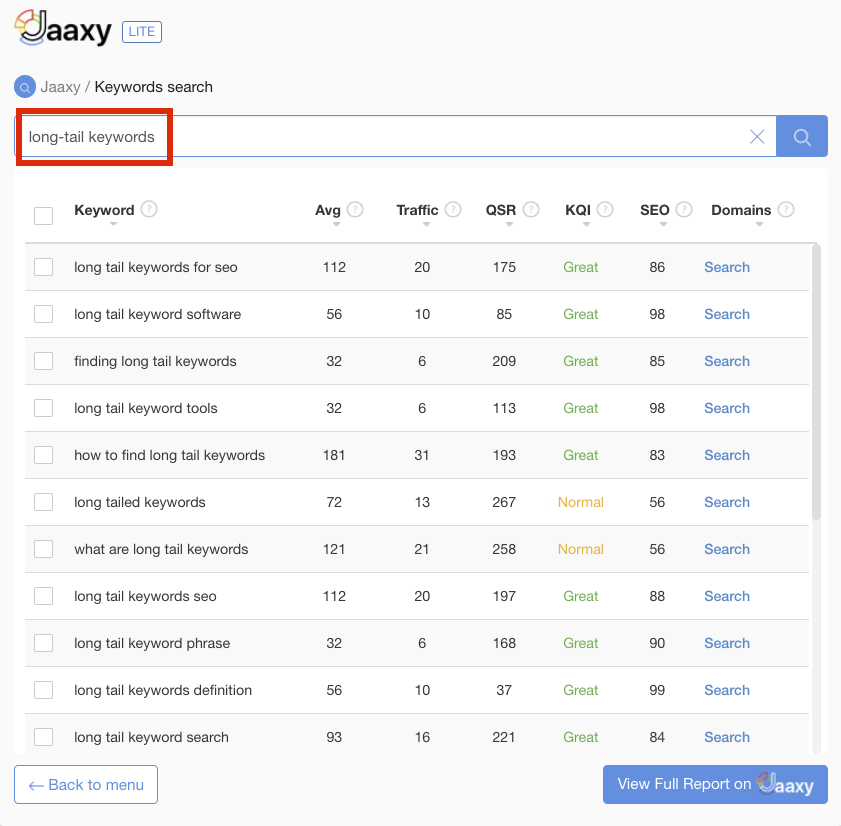
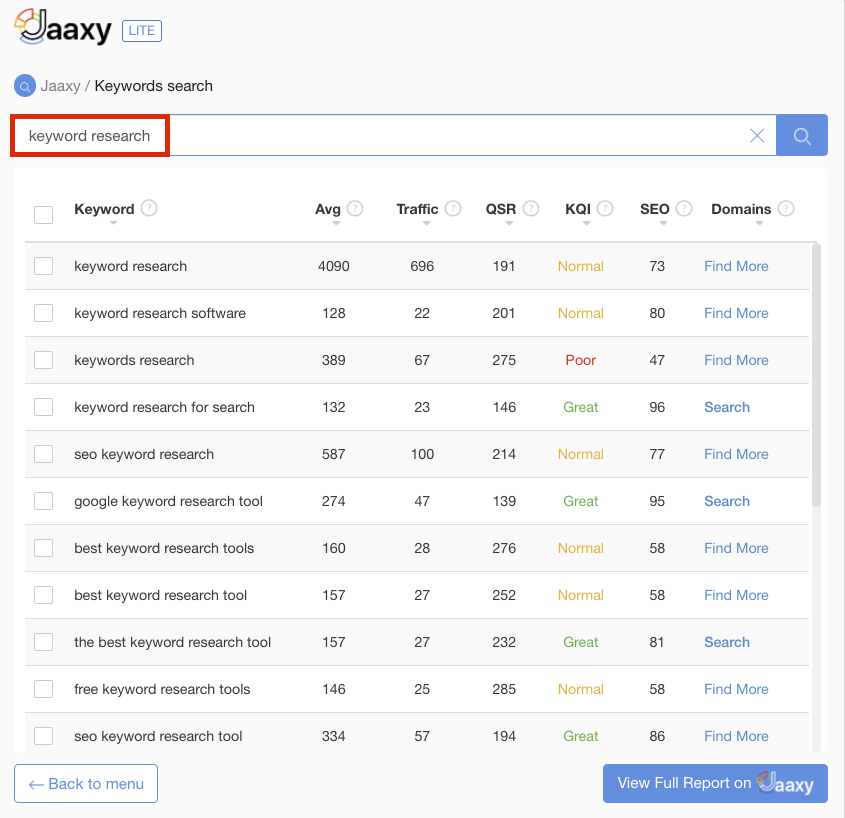
The terms I plugged into my keyword research tool are considered “Seed Keywords”, they are the main keywords that form the foundation of keyword research.
However, looking at the generated list of suggestions, you’ll find longer terms with the seed keyword plus a modifier. These are the beautiful long-tail keywords we are looking for.
why use long-tail keywords?
Now that you have a better understanding of long-tail keywords, you should also know why long-tail keywords are so Important for SEO.
Here are two reasons you should be focusing on long-tail keywords in your keyword research.
1. Long-tail keywords aren’t as competitive
Whether it’s pay-per-click advertising or search engine optimization, marketers aren’t usually optimizing for long-tail keywords as much as short-tail keywords. This makes long-tail keywords easier to rank for because there is less competition.
2. Long-tail keywords have a better conversion rate
Take a look at these two results for the seed keyword “, money.”

Right away, I’m sure you can spot some differences in the results.
Although “make money online scams” has a significantly lower search volume than “money,” it is way more specific. This is good because it allows us to see the exact search intent behind the word.
If you were to target a person searching for “money,” you would be no closer to understanding their intent because it’s so broad. With the long-tail keyword, we know the other person is looking for make money online scams. Therefore, you can target this keyword better by producing content relevant to it.
Long-tail keywords with lower search volume often convert better, because searchers are more specific and intentional in their searches.
how to find long-tail keywords?
I think you are starting to realize the potential there is in using long-tail keywords. That is nice and all but, how do we find these keywords in the first place?
There are several ways you can go about long-tail keywords but, here are the 4 ways I like to do so:
1.Google Autocomplete
This is perhaps my favorite method of finding long-tail keywords. Unless you are new to searching the internet then you have seen Google Autocomplete in action.
What makes this method so awesome is that the suggestions come straight from Google, which is the search engine we are all trying to rank for.
With Google Autocomplete all you have to do is type in the keyword you want to target and let Google do the rest, providing you with multiple suggestions.
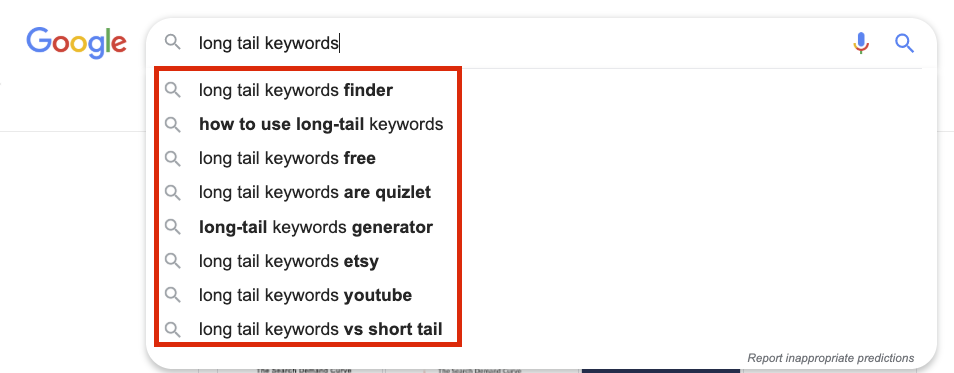
If you want to get the most out of this method, I recommend you use “The Alphabet Soup” approach, which is where you type a single letter before or after your desired keyword to see what Google returns.
The only problem with this approach is that typing “{keyword} a”, “{keyword} b”, “{keyword} c”, etc. can be a hassle.
It’s still well worth it, though.
2. Google “Searches Related To…”
When browsing Google’s search engine result page, have you ever noticed, when you scroll to the bottom, there’s a section called, “Searches related to…”?.
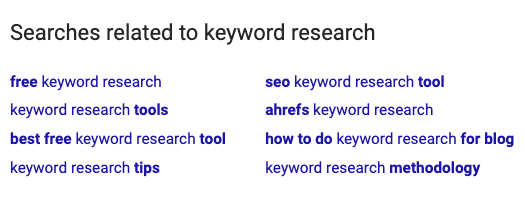
This is another great place to find long-tail keywords related to your topic.
Next time you are performing keyword research, simply type in the keyword you want to rank for and check out the related searches that Google provides.
If you want to truly maximize the approach, once you find a long-tail keyword you like, click on it, and see what searches are related to that result.
You can keep doing this over and over again, letting Google take you down the rabbit hole of endless topics related to your keyword.
3. Google’s “People Also Ask..” Boxes
Yet, another easy way to find long-tail keyword ideas is through Google’s “People Also Ask..” feature.
I’m sure you guess how it works already. Just like the other methods, type in your desired keyword and allow Google to show you questions that people ask around that keyword.
You can use this method the same way as the one above. Once you find your desired suggestion, click on it and then look at the “People Also Ask..” section of that term. It’s literally too easy.
Quick Tip: You will notice that when you click the down arrow to expand on a question, you get the answer, plus Google will show you more questions. If you click the down arrow multiple times on a suggestion, the search page will give you a long list of long-tail keywords
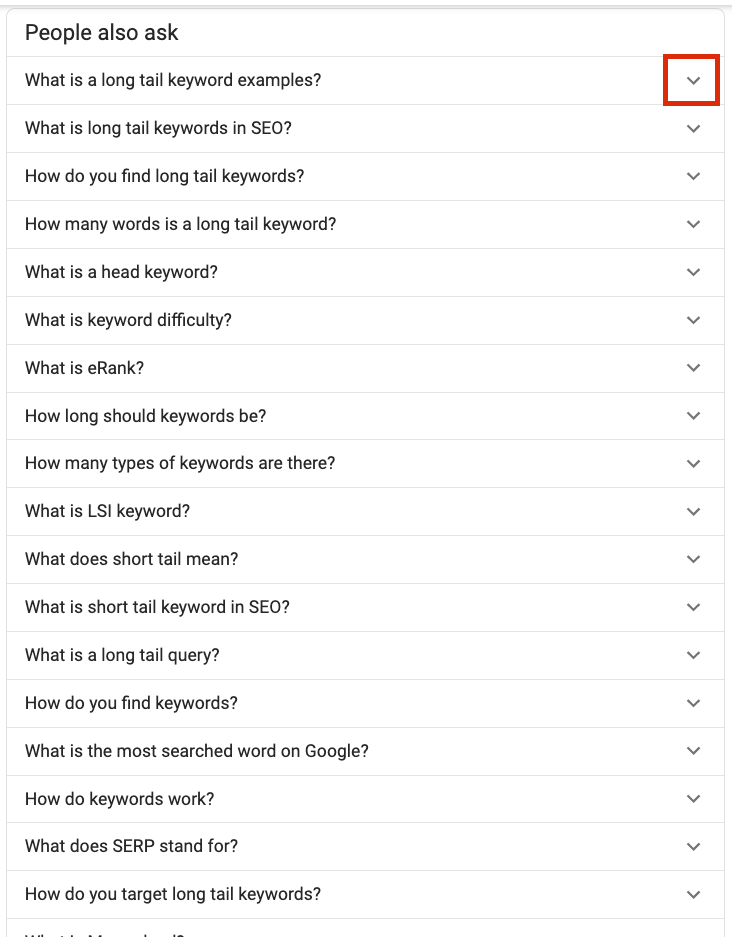
4. Keyword Research Tools
Of course, you can’t mention keyword research without including the dozens of keyword research tools available to use, right?
Although keyword tools are the preferred method of finding keyword ideas, I suggest you only use them after you have exhausted the three methods above.
With that being said, there is no denying the amount of time you save by using keyword tools.
Here are a few of my favorite tools to find long-tail keywords:
4a) AnswerThePublic
If you are trying to condense all your Google search efforts into one place, AnswerThePublic is extremely helpful. It’s a simple keyword research tool that generates hundreds of results based on keyword related questions.

To use this tool, type a seed keyword into the search field and click “Get Questions.”
The tool will then show you questions that people tend to ask about your topic.
You’ll realize that the questions are broken down in “who, what, when, where” format, making them easier to navigate.
Personally, I like the visualization format used when the results are produced but, you have the option to turn this feature off.
Because this tool provides mainly question-based results, you will have a dense list of long-tail keywords in a few short minutes.
4b) Ubersuggest
Originally created as a tool that scraped “Google Suggest” terms, Ubersuggest is a free SEO tool that specializes in generating new keyword ideas.
To use it, type in a keyword and Ubersuggest will get to work to find long-tail versions of the term that you typed.
This tool also gives you important data for each keyword including monthly search volume, average CPC, PPC competition and SEO competition. These stats can serve as a high-level overview you can scan through when deciding on keywords.
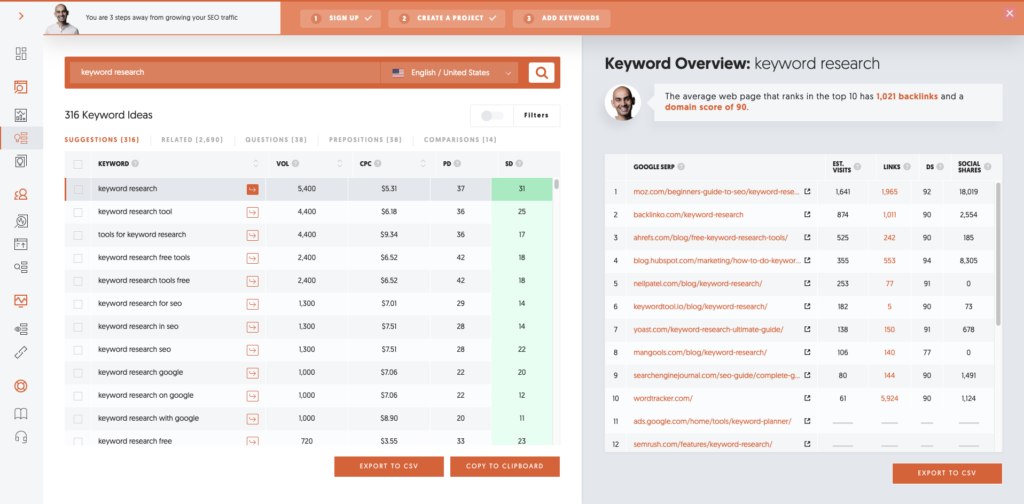
I recommend using this tool when you already know the specific topic you want to cover.
Ubersuggest provides results that are based closely on the original keyword you enter on the home screen; therefore, it’s not great for brainstorming completely new keywords and content ideas.
4c) Google Keyword Planner
When it comes to SEO-focused keyword research, the Google Keyword Planner is an awesome tool, capable of generating thousands of potential keywords.
The only catch is to use this tool you need to have a Google Ads account.
If you don’t have an Adwords account already, you can set one up in a few minutes. And yes, it’s free.
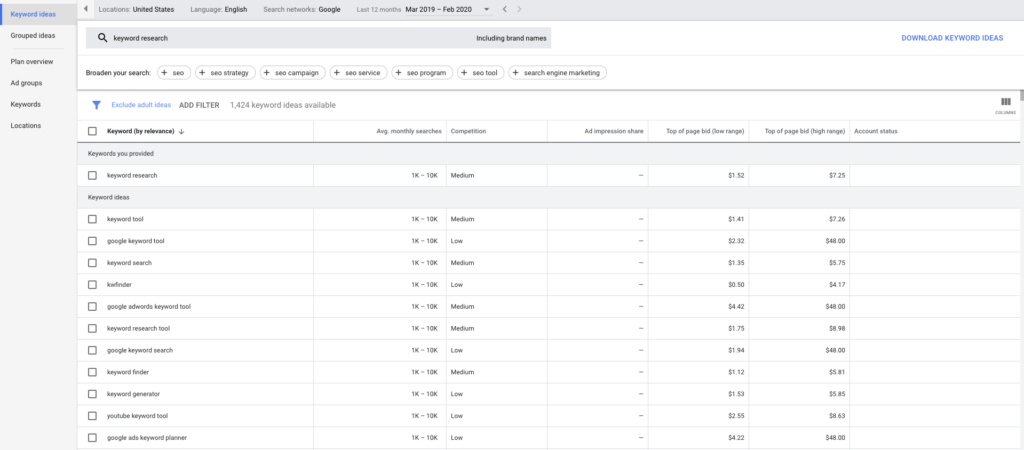
It’s important to know, however, this tool was designed with PPC advertisers in mind, There are many features that won’t be useful if you’re using it to find long-tail keywords for SEO.
Regardless, the Google Keyword Planner is still great for finding new keywords. All you have to do is simply plug in the keyword(s) related to your product or business and allow Google to go to work.
Google will search its internal database of keywords, specific to different industries, and return thousands of results.
When using the Google Keyword Planner, the value you get from it is largely based on the information that you enter. So, you want to be very strategic about what you enter into the search field.
I have found the best use for this tool is inputting the URL of competitors within my niche and seeing what keywords they rank for. This gives me an idea of the keywords I should and shouldn’t target.
4d) Jaaxy
Lastly, the most straightforward and effective tool I use for long-tail keyword research is Jaaxy.
This tool makes it easy to get thousands of related keyword ideas, some of which you won’t find in most other keyword tools.
Jaaxy also gives helpful data on every keyword that it generates like competition, search volume, and potential traffic.
Perhaps the most helpful feature though is the Quoted Search Result (QSR) section, which indicates how many other sites are trying to rank for the exact same keywords as me.
This gives me an idea of which long-tail keywords I have a better chance of ranking for on the search results page.
Although there are more advanced options when it comes to keyword tools (SEMRush and Ahrefs), Jaaxy is still a powerful, yet cheaper, option.
Choosing the Right Long Tail Keyword
At this point, I hope you understand that not all keywords are created equal which makes choosing the right ones that much more important.
Choosing the right long-tail keywords can make all the difference in how much revenue you make or where you rank in the search engines.
In order to find the right keywords to target, you need to stick to four main criteria:
4 main criteria:
1.Search Volume:
Very straightforward. As a general rule, the higher the search volume, the better. Now, with that being said, you also need to consider the competition. Usually, if a keyword has a large amount of traffic, there are more people competing for that term.
In Jaaxy, I pay close attention to the average amount of monthly searches a keyword gets and the potential amount of traffic it would generate if I ranked on Google’s first page.

2. Organic SEO Competition:
Evaluating keyword competition is where you get an idea of what you are up against. If you are a new website owner, you’ll want to aim for the keywords with less competition, at least until your site gets more domain authority. This is important even when targeting long-tail keywords.
In the Jaaxy tool, I only aim for QSR scores less than 100, which means there are less competing websites. I also go for SEO scores in the 90’s which indicates the likelihood of my content ranking on the first page.

3. Grammatically Correct:
Even if a keyword fits the two criteria above, it has to be grammatically correct. This is important because if your results appear in the search engine, you want it to be clear and understandable to your audience.

By only targeting grammatically correct keywords you are more likely to present yourself as an authority in your niche.
4. Commercial Intent:
You can get all the traffic in the world and still not make a sale if your keywords have no commercial intent.
Commercial intent is the process of evaluating the likelihood that someone searching for a keyword becomes a lead or customer. Determining the commercial intent of a keyword is more of an art than a science.

Typically, if a keyword has a high “suggested bid” in the Google Keyword Planner or has a higher competition volume, it likely has commercial intent.
Final Thoughts
Less competitive, yet highly specific, this is what makes long-tail keywords so awesome. If you were able to stick with me through this entire post then you should now have a clear understanding of long-tail keywords and how to leverage them in your SEO efforts.
I’m confident that if you use these strategies, you’ll find yourself ranking for keywords sooner than you ever thought. And who knows, over time, you might begin to rank for the same keywords as your top competitors. Better yet, you might even outperform them.
If you are looking for a keyword tool that is both powerful and user friendly, take Jaaxy for a whirl.
Of course, with the strategies gained from this post, you are more than capable of performing keyword research without a tool. But, I say you can never be over-prepared on the SEO battlefield.
I look forward to hearing how well you are crushing it in the days to come.


